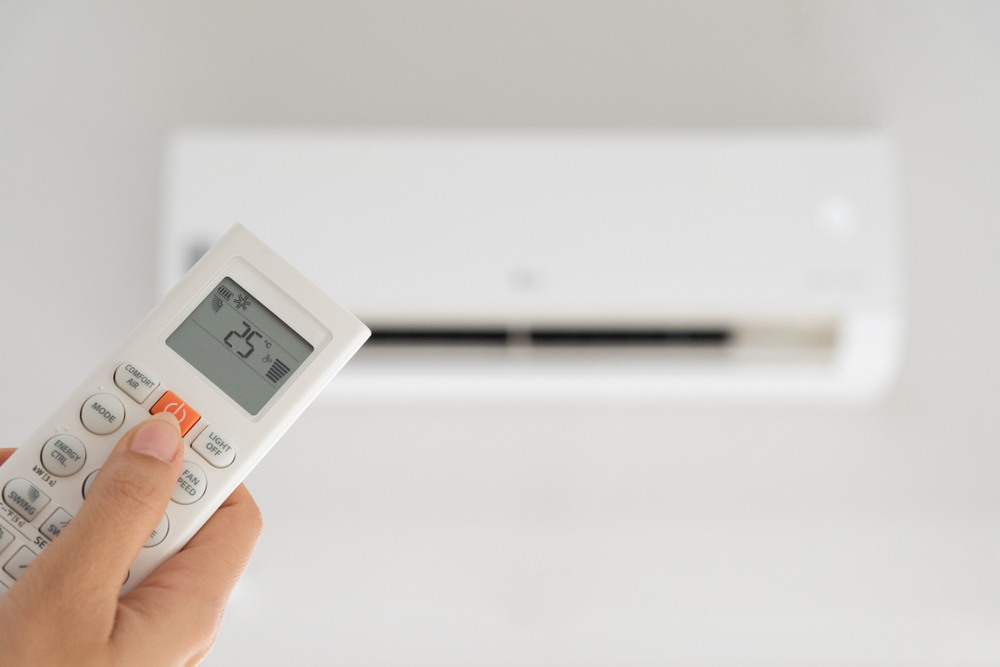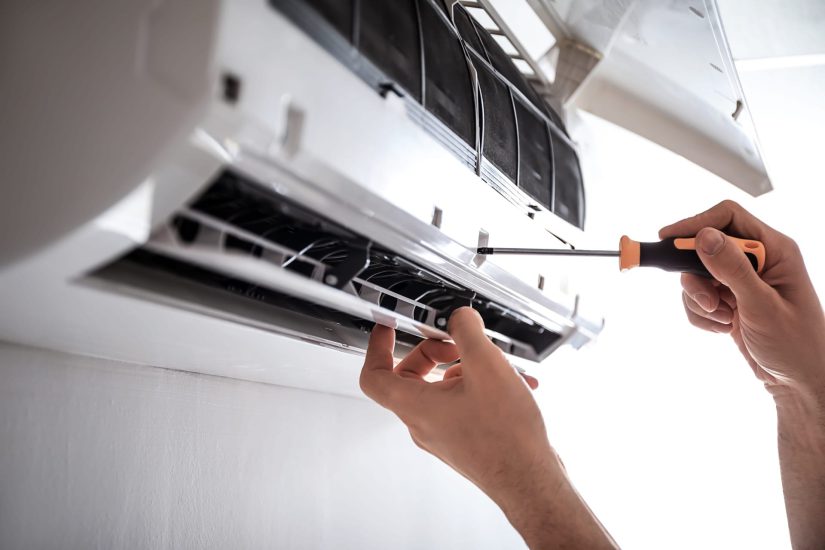
Central air conditioning systems offer an efficient way to cool entire buildings, keeping indoor climates comfortable during the hot summer months. A central air conditioning system works by using a network of ducts to distribute cooled air from a central unit to various rooms in a building. One of the significant benefits of central air conditioning is its ability to maintain even cooling without the noise and hassle associated with individual units.
Types and Components of Central AC Systems
Central air conditioning systems come in various forms, each with unique features and components that contribute to functionality and efficiency. This section explores these systems’ specific types and essential components.
Exploring Different Systems
Central air installation can involve a few different types of systems. Split systems are the most common, consisting of an outdoor unit and an indoor unit. The outdoor unit houses the compressor and condenser, while the indoor unit includes the evaporator coil and air handler.
Packaged systems contain all components in a single outdoor unit, making them ideal for homes with limited indoor space. These systems are installed on rooftops or near the foundation. Heat pumps can function as both cooling and heating systems by reversing the refrigeration cycle, making them versatile for year-round use.
Understanding the Core Components
A central AC system is composed of several key elements. The compressor is crucial as it pressurizes and circulates the refrigerant. The condenser coils dissipate heat captured from the home, while the evaporator coil absorbs heat from the indoor air.
The refrigerant lines facilitate the transfer of refrigerant between the coils. The air handler includes the blower that distributes conditioned air throughout the home via ductwork. An efficient thermostat controls the desired temperature by signaling the system when to activate or deactivate.
Understanding these components ensures proper maintenance and enhances the longevity and performance of the home air conditioning system.
Maximizing Energy Efficiency
Efficient use of central air conditioning systems can lead to substantial energy savings and reduced environmental impact. Key strategies include evaluating SEER ratings and adopting practical energy-saving practices.
Evaluating SEER Ratings
SEER (Seasonal Energy Efficiency Ratio) ratings measure the cooling output of air conditioning systems over a season divided by the energy consumed. Higher SEER ratings indicate more efficient units.
Residential central air conditioning units typically range from SEER 13 to SEER 21. Investing in a unit with a higher SEER rating can result in significant energy savings over time despite potentially higher initial costs.
Energy-efficient air conditioning systems not only lower electricity bills but also reduce the carbon footprint. Always review the SEER rating before purchasing or upgrading an air conditioning system.
House Pro’s approach to SEER evaluation recommends considering both purchase price and long-term energy savings, ensuring homeowners get the best value.
Adopting Energy-Saving Practices
Simple energy-saving practices can maximize the efficiency of any system. Ensure regular maintenance, such as changing air filters and cleaning coils, to keep the unit running smoothly.
Use programmable thermostats to control temperatures effectively, adjusting them when no one is home or during sleeping hours to save energy. House Pro’s approach emphasizes these practices, recommending bi-annual check-ups and educating homeowners on optimal thermostat settings.
Proper Maintenance for System Longevity
Proper maintenance of central air conditioning systems ensures they operate efficiently and last longer. Critical practices include regular filter changes, seasonal check-ups, and knowing how to address common issues.
Routine Upkeep Tasks
Routine upkeep includes several important tasks. Regular filter changes are essential, as clogged filters can reduce airflow and efficiency. Filters should be inspected monthly and replaced every 1-3 months depending on usage and filter type.
Another crucial task is scheduling seasonal check-ups. A professional should inspect and clean the system in both spring and fall. These check-ups help identify and resolve potential issues before they become costly repairs.
Cleaning the coils and fins is also necessary. Dirty coils can decrease efficiency and airflow. Coils should be checked annually and cleaned as needed. Fins need to be kept straight to ensure proper airflow through the coils.
Finally, the condensate drain should be checked periodically. Blocked drains can cause moisture buildup, leading to water damage and increased humidity levels in the home.

Troubleshooting Common Issues
Common issues often arise with central air conditioning systems. One frequent problem is the system not cooling properly. Check for dirty filters or coils, and ensure the thermostat settings are correct. Another common issue is the unit not turning on, often caused by a tripped circuit breaker or blown fuse.
If the system cycles on and off too frequently, it could be due to refrigerant leaks, a failing thermostat, or issues with the compressor. Strange noises may indicate problems with the fan motor, belt, or blower assembly.
Addressing these issues often requires professional intervention. However, some troubleshooting can be done by the homeowner, such as checking for simple resets or changing settings.
Demystifying Central Air Conditioning
Central air conditioning systems often come with myths that can mislead consumers. One common misconception is that they are prohibitively expensive to run. While initial installation costs can be significant, modern systems are highly energy-efficient and can save money in the long run.
Another myth is that central air conditioners require complicated and frequent maintenance. In reality, they need only regular filter changes and annual professional check-ups to ensure peak performance.
Technical jargon can further mystify these systems. Terms like SEER (Seasonal Energy Efficiency Ratio) and BTU (British Thermal Units) are critical. SEER measures efficiency, with higher numbers indicating better performance. BTU measures the cooling capacity, which helps determine the right system size for a space.
People often believe central air conditioning systems are noisy. Technological advancements have made modern units impressively quiet, providing comfort without disruption.
There’s also a misconception that these systems are only for cooling. Many models double as heaters, making them versatile and suitable for year-round use.
To clarify, central air systems consist of a network of ducts that distribute cooled air from a central unit. This setup ensures even temperature distribution and better air quality compared to individual units.

